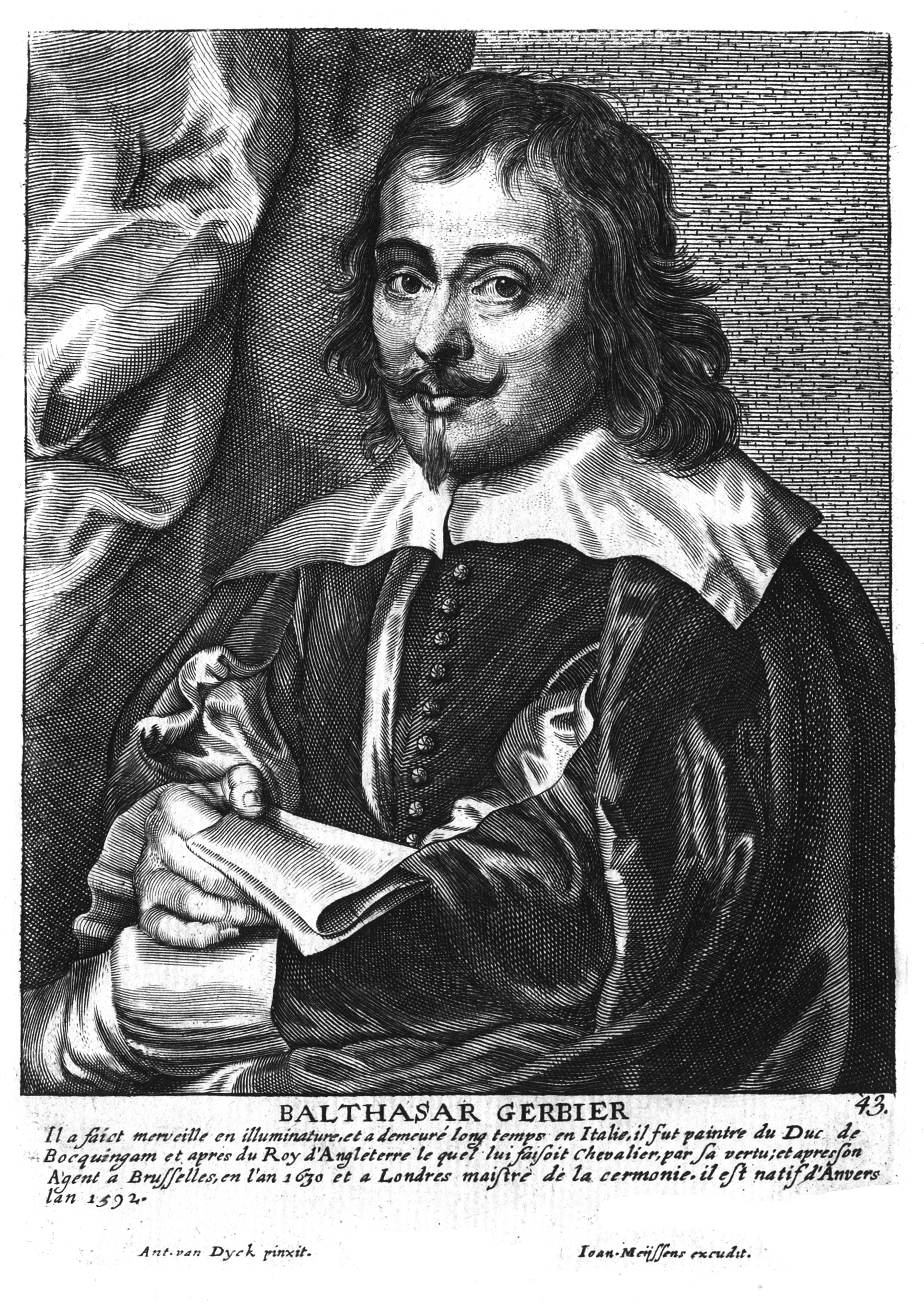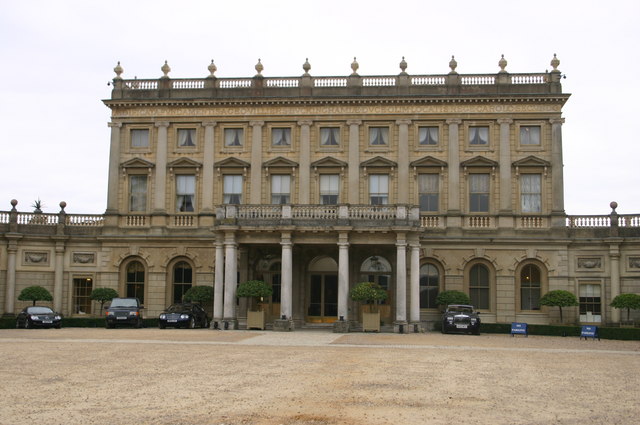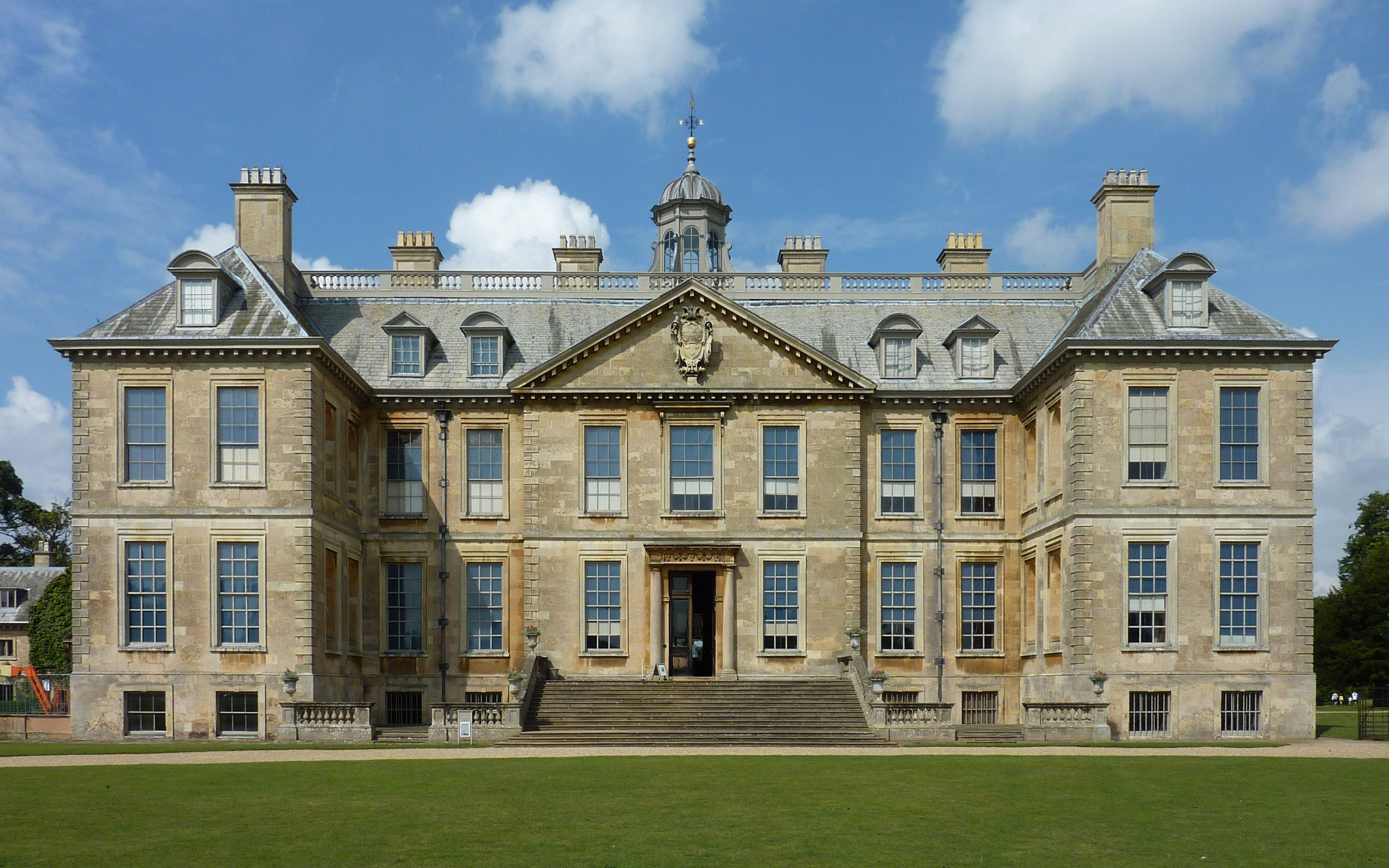|
William Winde
Captain William Winde (c.1645–1722) was an English gentleman architect, whose Royalist military career, resulting in fortifications and topographical surveys but lack of preferment, and his later career, following the Glorious Revolution, as designer or simply "conductor" of the works of country houses, has been epitomised by Howard Colvin, who said that "Winde ranks with Hooke, May, Pratt and Talman as one of the principal English country house architects of the late seventeenth century" (Colvin 1995, p 1066). Winde was born in Holland to English parents.Geoffrey Beard, "William Winde and Interior Design", ''Architectural History'' 27, Design and Practice in British Architecture: Studies in Architectural History Presented to Howard Colvin (1984:150-162) Works His work included: *Hampstead Marshall, (for William Craven, 1st Earl of Craven), where he completed a house begun by Sir Balthazar Gerbier, c. 1662–1688, from the dates on many surviving drawings. Thomas Strong, mas ... [...More Info...] [...Related Items...] OR: [Wikipedia] [Google] [Baidu] |
Balthasar Gerbier
Sir Balthazar Gerbier (23 February 1592, in N.S. – 1663), was an Anglo-Dutch courtier, diplomat, art advisor, miniaturist and architectural designer, in his own words fluent in "several languages" with "a good hand in writing, skill in sciences as mathematics, architecture, drawing, painting, contriving of scenes, masques, shows and entertainments for great Princes... as likewise for making of engines useful in war." Biography Gerbier, the son of Anthony Gerbier,Colvin 1995. was born in Middelburg, Zeeland, of a Huguenot family that had settled there. Dutch sources show that his family were cloth merchants although he claimed that his grandfather had been a "Baron Douvilly" and so signed himself on occasion. As a designer of siege machinery he was recommended by Maurice of Nassau, later Prince of Orange, through whose efforts Gerbier arrived in London in 1616, in the train of the Dutch ambassador. In London he soon found a patron in George Villiers, 1st Duke of Buckingham for ... [...More Info...] [...Related Items...] OR: [Wikipedia] [Google] [Baidu] |
Coventry
Coventry ( or ) is a City status in the United Kingdom, city in the West Midlands (county), West Midlands, England. It is on the River Sherbourne. Coventry has been a large settlement for centuries, although it was not founded and given its city status until the Middle Ages. The city is governed by Coventry City Council. Historic counties of England, Formerly part of Warwickshire until 1451, Coventry had a population of 345,328 at the 2021 census, making it the tenth largest city in England and the 12th largest in the United Kingdom. It is the second largest city in the West Midlands (region), West Midlands region, after Birmingham, from which it is separated by an area of Green belt (United Kingdom), green belt known as the Meriden Gap, and the third largest in the wider Midlands after Birmingham and Leicester. The city is part of a larger conurbation known as the Coventry and Bedworth Urban Area, which in 2021 had a population of 389,603. Coventry is east-south-east of ... [...More Info...] [...Related Items...] OR: [Wikipedia] [Google] [Baidu] |
1640s Births
Year 164 ( CLXIV) was a leap year starting on Saturday (link will display the full calendar) of the Julian calendar. At the time, it was known as the Year of the Consulship of Macrinus and Celsus (or, less frequently, year 917 '' Ab urbe condita''). The denomination 164 for this year has been used since the early medieval period, when the Anno Domini calendar era became the prevalent method in Europe for naming years. Events By place Roman Empire * Emperor Marcus Aurelius gives his daughter Lucilla in marriage to his co-emperor Lucius Verus. * Avidius Cassius, one of Lucius Verus' generals, crosses the Euphrates and invades Parthia. * Ctesiphon is captured by the Romans, but returns to the Parthians after the end of the war. * The Antonine Wall in Scotland is abandoned by the Romans. * Seleucia on the Tigris is destroyed. Births * Bruttia Crispina, Roman empress (d. 191) * Ge Xuan (or Xiaoxian), Chinese Taoist (d. 244) * Yu Fan, Chinese scholar and official (d. ... [...More Info...] [...Related Items...] OR: [Wikipedia] [Google] [Baidu] |
17th-century English Architects
The 17th century lasted from January 1, 1601 ( MDCI), to December 31, 1700 ( MDCC). It falls into the early modern period of Europe and in that continent (whose impact on the world was increasing) was characterized by the Baroque cultural movement, the latter part of the Spanish Golden Age, the Dutch Golden Age, the French ''Grand Siècle'' dominated by Louis XIV, the Scientific Revolution, the world's first public company and megacorporation known as the Dutch East India Company, and according to some historians, the General Crisis. From the mid-17th century, European politics were increasingly dominated by the Kingdom of France of Louis XIV, where royal power was solidified domestically in the civil war of the Fronde. The semi-feudal territorial French nobility was weakened and subjugated to the power of an absolute monarchy through the reinvention of the Palace of Versailles from a hunting lodge to a gilded prison, in which a greatly expanded royal court could be more easily k ... [...More Info...] [...Related Items...] OR: [Wikipedia] [Google] [Baidu] |
Parterre
A ''parterre'' is a part of a formal garden constructed on a level substrate, consisting of symmetrical patterns, made up by plant beds, low hedges or coloured gravels, which are separated and connected by paths. Typically it was the part of the garden nearest the house, perhaps after a terrace. The view of it from inside the house, especially from the upper floors, was a major consideration in its design. The word "parterre" was and is used both for the whole part of the garden containing parterres and for each individual section between the "alleys". The pattern or the borders of the beds may be marked by low, tightly pruned, evergreen hedge (gardening), hedging, and their interiors may be planted with flowers or other plants or filled with mulch or gravel. Parterres need not have any flowers at all, and the originals from the 17th and 18th centuries had far fewer than modern survivals or reconstructions. Statues or small evergreen trees, clipped as pyramids or other sha ... [...More Info...] [...Related Items...] OR: [Wikipedia] [Google] [Baidu] |
Wotton House
Wotton House, Wotton Underwood, Buckinghamshire, England, is a stately home built between 1704 and 1714, to a design very similar to that of the contemporary version of Buckingham House. The house is an example of English Baroque and a Grade I listed building. The architect is uncertain although William Winde, the designer of Buckingham House, has been suggested. The grounds were laid out by George London and Henry Wise with a formal parterre and a double elm avenue leading down to a lake. Fifty years later William Pitt the Elder and Capability Brown improved the landscape, creating pleasure grounds with two lakes. After a fire gutted the main house in 1820 Richard Grenville, 1st Earl Temple, commissioned John Soane to rebuild it. After the 3rd Duke of Buckingham and Chandos, the last direct Grenville male heir, died in 1889, the house was let to a succession of tenants; including, notably; the philanthropist, Leo Bernard William Bonn (1850-1929) who became deaf while residing ... [...More Info...] [...Related Items...] OR: [Wikipedia] [Google] [Baidu] |
George Villiers, 2nd Duke Of Buckingham
George Villiers, 2nd Duke of Buckingham, 20th Baron de Ros, (30 January 1628 – 16 April 1687) was an English statesman and poet. Life Early life George was the son of George Villiers, 1st Duke of Buckingham, favourite of James I and Charles I, and his wife Katherine Manners. He was only seven months old when his father was assassinated at Portsmouth by the disaffected officer John Felton. Subsequently, he was brought up in the royal household of Charles I, together with his younger brother Francis and the King's own children, the future Charles II and James II. He was educated at Trinity College, Cambridge, where he obtained the degree of Master of Arts in 1642. For a time he was taught geometry by Thomas Hobbes. During this time he was also acquainted with George Aglionby, whose influence he later accredited with persuading him to follow the English King in the Civil War. Involvement in the English Civil War In the Civil War he fought for the King, and too ... [...More Info...] [...Related Items...] OR: [Wikipedia] [Google] [Baidu] |
Cliveden House
Cliveden (pronounced ) is an English country house and estate in the care of the National Trust in Buckinghamshire, on the border with Berkshire. The Italianate mansion, also known as Cliveden House, crowns an outlying ridge of the Chiltern Hills close to the South Bucks villages of Burnham and Taplow. The main house sits above the banks of the River Thames, and its grounds slope down to the river. There have been three houses on this site: the first, built in 1666, burned down in 1795 and the second house (1824) was also destroyed by fire, in 1849. The present Grade I listed house was built in 1851 by the architect Charles Barry for the 2nd Duke of Sutherland. Cliveden has been the home to a Prince of Wales, two Dukes, an Earl, and finally the Viscounts Astor. As the home of Nancy Astor, wife of the 2nd Viscount Astor, Cliveden was the meeting place of the Cliveden Set of the 1920s and 30s—a group of political intellectuals. Later, during the early 1960s when it was t ... [...More Info...] [...Related Items...] OR: [Wikipedia] [Google] [Baidu] |
Belton House
Belton House is a Grade I listed country house in the parish of Belton near Grantham in Lincolnshire, England, built between 1685 and 1688 by Sir John Brownlow, 3rd Baronet. It is surrounded by formal gardens and a series of avenues leading to follies within a larger wooded park. Belton has been described as a compilation of all that is finest of Carolean architecture, the only truly vernacular style of architecture that England had produced since the Tudor period.Nicolson, 148. It is considered to be a complete example of a typical English country house. For about three centuries until 1984, Belton House was the seat successively of the Brownlow family, which had first acquired land in the area in the late 16th century, and of its heirs the Cust family (in 1815 created Earl Brownlow). Despite his great wealth Sir John Brownlow, 3rd Baronet, chose to build a comparatively modest house rather than one of the grand Baroque palaces being built by others at the time. The contempo ... [...More Info...] [...Related Items...] OR: [Wikipedia] [Google] [Baidu] |
Castle Bromwich Hall
Castle Bromwich Hall is a Jacobean mansion in the Castle Bromwich area of Birmingham, England. It is a Grade I listed building. History The Hall was built between 1557 and 1585 by Sir Edward Devereux, 1st Baronet of Castle Bromwich, MP for Tamworth in Staffordshire. It was single storey with a plain entrance. It was then bought by Sir John Bridgeman (son of Orlando Bridgeman, keeper of the Great Seal) in 1657. He extended and improved the property in 1672, adding the second floor and a large front porch. The porch projected out by ten feet from the main building. Above the twisted columns of grey stone of the porch are two figures in niches, called Peace and Plenty. The coat of arms and monogram of Sir John is carved into the stone above the doorway. The Bridgemans were created Barons Bradford in 1794 and Earls of Bradford in 1813. A marriage brought Weston Park into their possession after which the Castle Bromwich Hall was often rented out. Features The Hall ... [...More Info...] [...Related Items...] OR: [Wikipedia] [Google] [Baidu] |
Newcastle House
Newcastle House is a mansion in Lincoln's Inn Fields in central London, England. It was one of the two largest houses built in London's largest square during its development in the 17th century, the other being Lindsey House. It is the northernmost house on the western side of the square. The house had a complex history. The first version was built in 1641-42 for the Earl of Carlisle. In 1672 it was purchased by William Herbert, 1st Marquess of Powis and renamed Powis House, but in 1684 it burned down. Reconstruction of a new house – effectively the one which still stands, albeit greatly altered – to designs by Captain William Winde commenced promptly, but in 1688 the house was ransacked by a mob in consequence of Lord Powis's association with the recently deposed James II. The following year Lord Powis's estates were attainted and he fled to France. The house was completed by Christopher Wren in 1694.Bridget Cherry and Nikolaus Pevsner, ''The Buildings of England: London 4 N ... [...More Info...] [...Related Items...] OR: [Wikipedia] [Google] [Baidu] |
London
London is the capital and largest city of England and the United Kingdom, with a population of just under 9 million. It stands on the River Thames in south-east England at the head of a estuary down to the North Sea, and has been a major settlement for two millennia. The City of London, its ancient core and financial centre, was founded by the Romans as '' Londinium'' and retains its medieval boundaries.See also: Independent city § National capitals The City of Westminster, to the west of the City of London, has for centuries hosted the national government and parliament. Since the 19th century, the name "London" has also referred to the metropolis around this core, historically split between the counties of Middlesex, Essex, Surrey, Kent, and Hertfordshire, which largely comprises Greater London, governed by the Greater London Authority.The Greater London Authority consists of the Mayor of London and the London Assembly. The London Mayor is distinguished fr ... [...More Info...] [...Related Items...] OR: [Wikipedia] [Google] [Baidu] |










